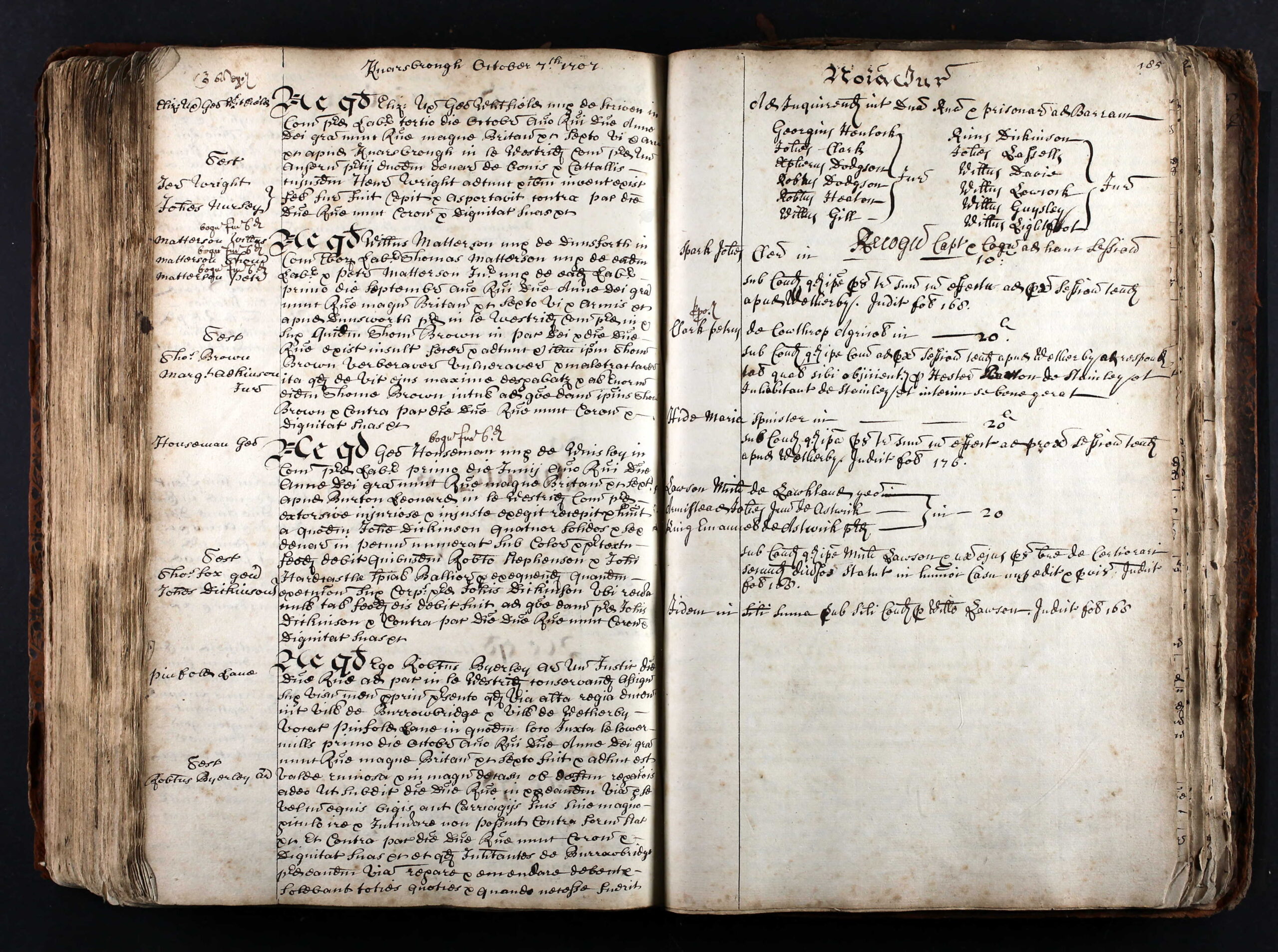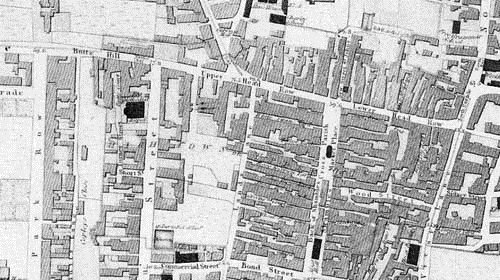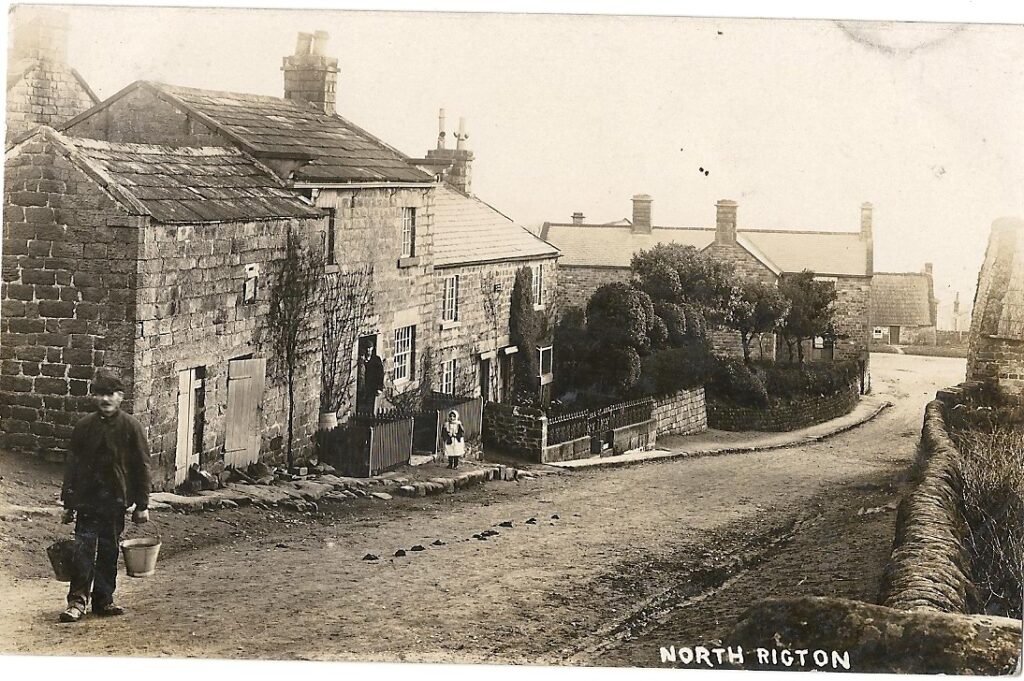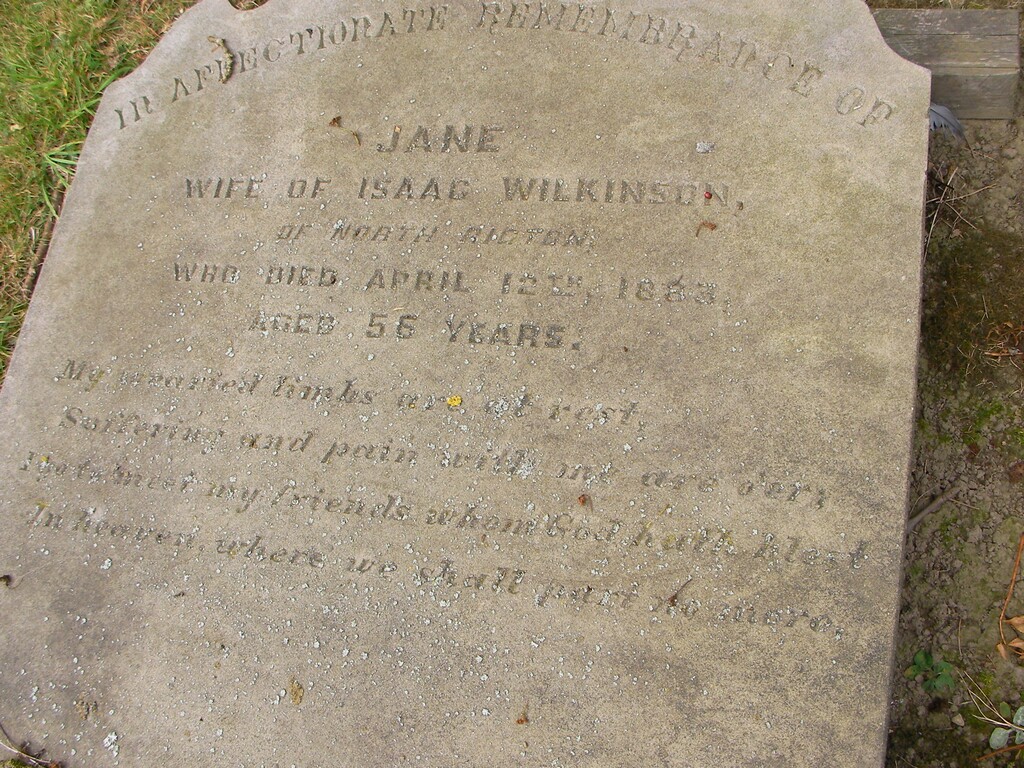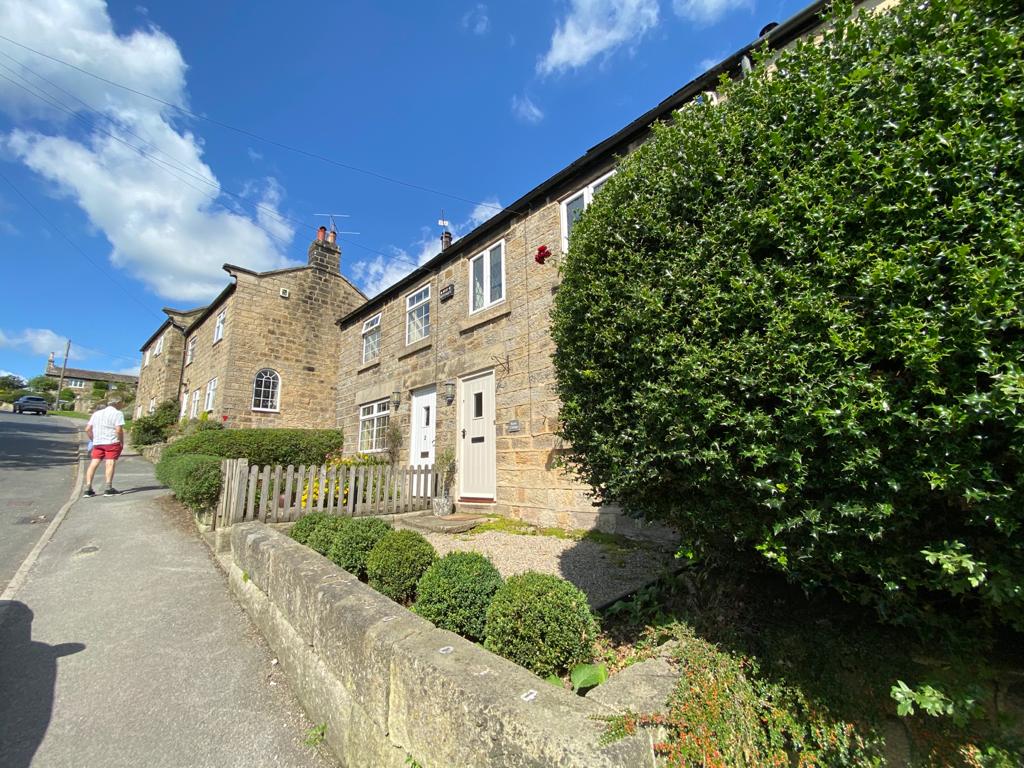I’ve been cautious about the 1921 census. £3.50 for each page. Half the price of a GRO certificate, double that of a will. And unlike both of those I know that it will be available within a standard subscription at some point in the future. (I am still considering taking out a premium subscription for findmypast – had they made this clear a couple of years ago I was ready to transfer my allegiance from ancestry, but since then I’ve invested even more in building my family tree on that platform, so it’ll be even more of an effort to transfer over).
I also had to manage my own expectations about what I would find. It wasn’t a helpful year for our family. Grandpy was a few months old, but none of my other grandparents had been born. Grandad arrived just five days later and Grandma the following month. Nana’s parents were not yet even married. All my great grandparents were around, but I knew where they were. Four of my great great grandparents would be missing, being four of the least well researched. I am grateful that the general strike which postponed this census did not affect the possibility of seeing the last of my great, great, great grandparents in the census as Martha (Handley) Clapham died on 29 March 1921. In other words, this census, unlike previous censuses, only really covered three generations about whom I already knew quite a lot.
I narrowed my purchases down to just the ten relating to direct ancestors alive at the time. One grandparent, eight great grandparents and twelve great great grandparents. Twenty one in total which is kind of apt.
Richard Walker, Mary (Wellock) & George Thomas Barrett
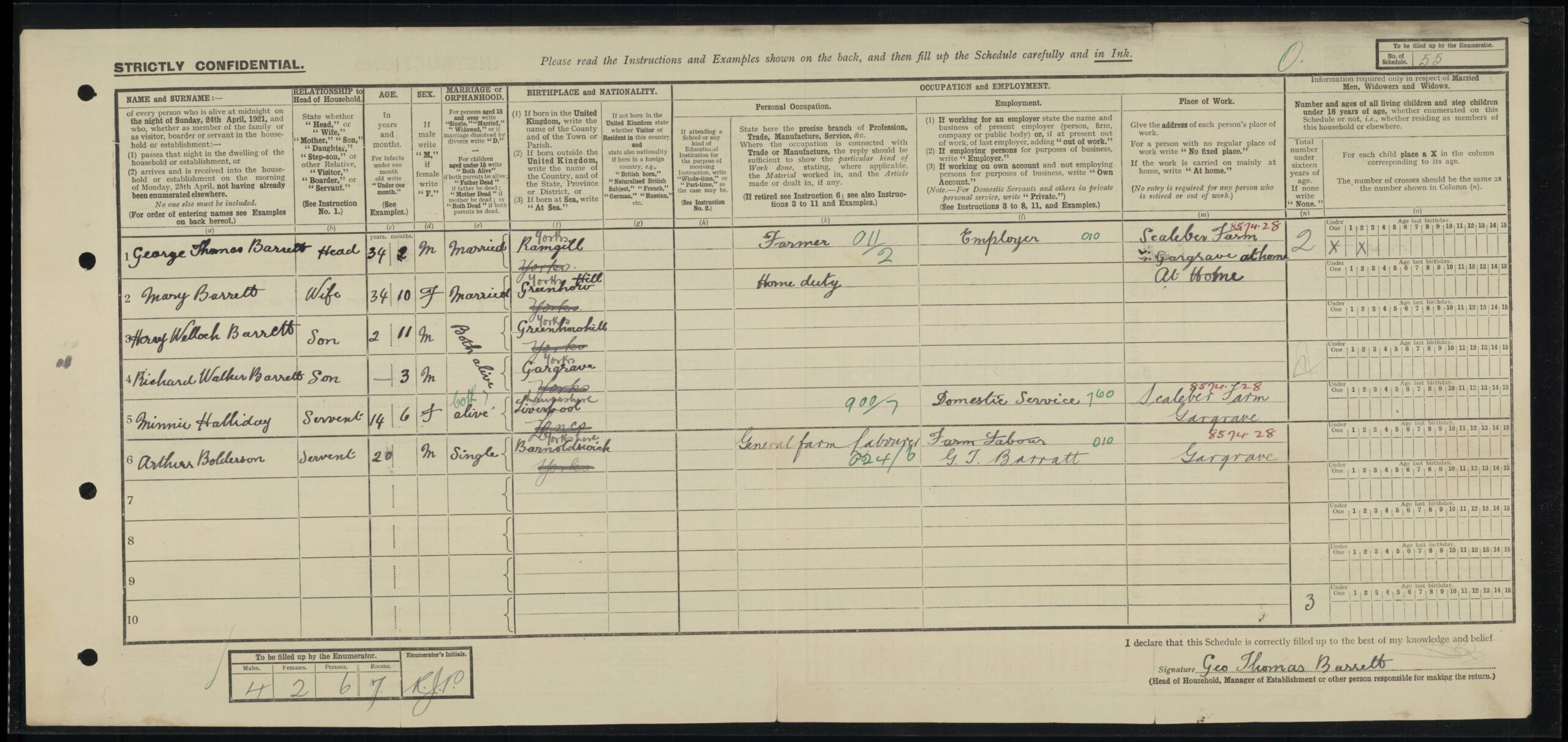
Grandpy (Richard Walker Barrett) was always going to be the first person I searched for. And yes, it was super cute to see him recorded for posterity aged just three months. It also allowed me to tick off his parents Mary (Wellock) and George Thomas Barrett. But I already knew they had lived at Scalebar Farm in Gargrave when Grandpy was born and it wasn’t either Toft Gate, Greenhow Hill nor Upper West End Farm, Stainburn the two farms with which this family is most closely associated. I didn’t know that Uncle Henry had been born at Greenhow Hill which gives me a possible date for when they might have taken on the tenancy of Scalebar, but the rest of the data on this page is all well documented elsewhere.
Mary (Walker) & Richard Wellock
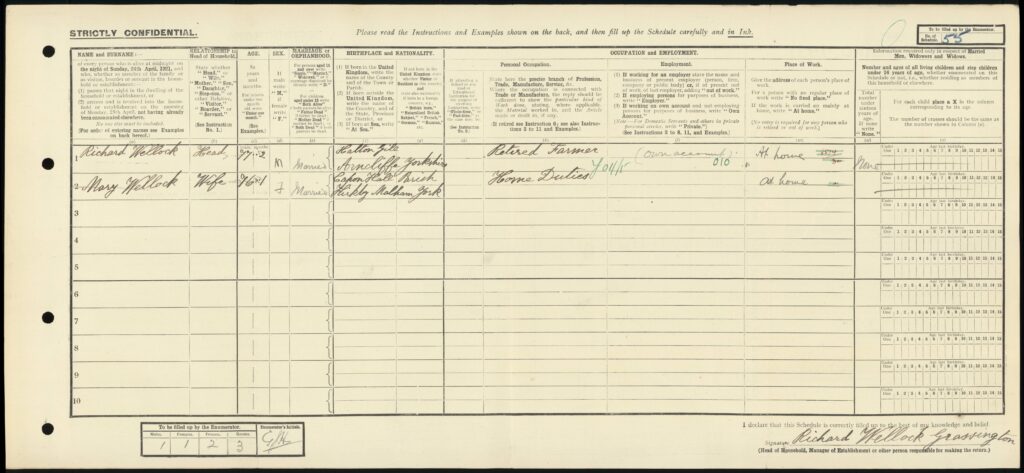
Possibly the least interesting was that relating to my Wellock great great grandparents. I could have filled in this entire form myself.
Jane (Brooks) & Henry Barrett
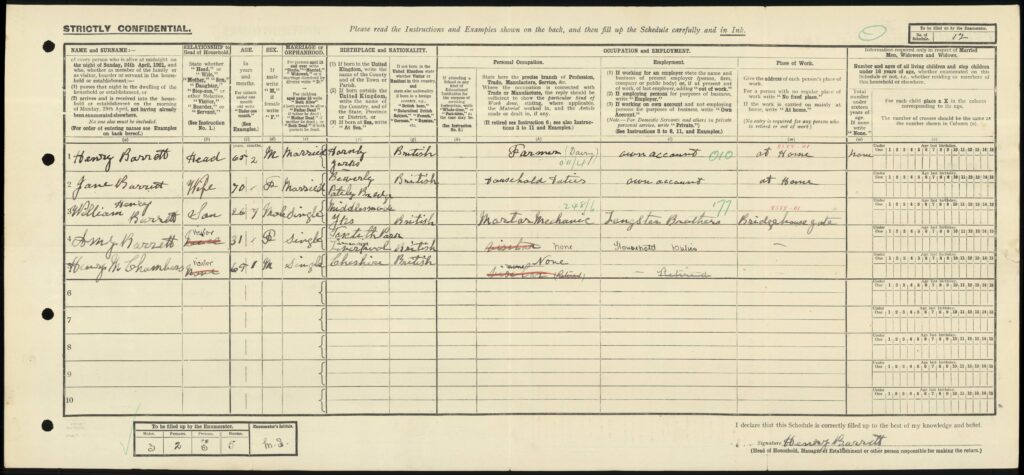
Whilst there was nothing new to be learnt about Grandpy’s Barrett grandparents, Jane (Brooks) & Henry Barrett, it was lovely to see a reference to William Henry Barrett. William served his country during WW1. It was only a couple of years ago that I learnt of his existence for he died from tuberculosis in 1924 and may have disappeared were it not for census records.
Then there are visitors. Amy, a niece of Henry’s went on to marry her fellow visitor, Henry M Chambers, thirty-four years her senior, but not until 1930, by which time, Henry was 74 and Amy had been his domestic help for at least twenty years. Amy suddenly made it onto my list of sibling & cousin stories to explore.
Marion, Annie (Bentley) & Ernest Moody

Unlike our other grandparents, Nana wasn’t even a twinkle in 1921. Her parents weren’t even to marry for another four years.
The Moody family (Nana’s maternal side) was the second census I looked for, mainly to check out the lodger. There’s a family rumour that the youngest son, George, may not have been Ernest’s and whilst I have a different interpretation it was rather satisfying to find the same Tom Atkinson, who was with the family in 1911, still living with the family on Lodge Terrace. George was born in between the two censuses so if a lodger was the father, then this was certainly he.
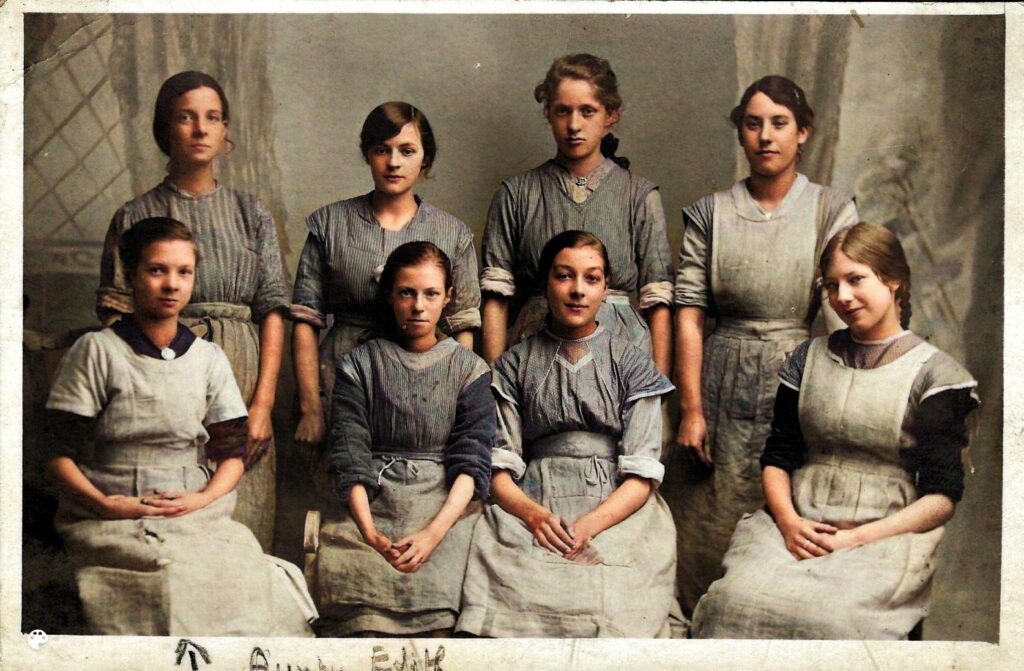
More excitingly still (and that which I consider to be “the” finding of the 1921 census) was the listing of Aunty Edie’s occupation and workplace as blanket weaver for Clayton Brothers, Coxley, Netherton. Finally, I was able to put some context to the photo I had inherited. These were factory girls.
Arthur, Sarah (Cooper) & Thomas (Butterworth) Booth
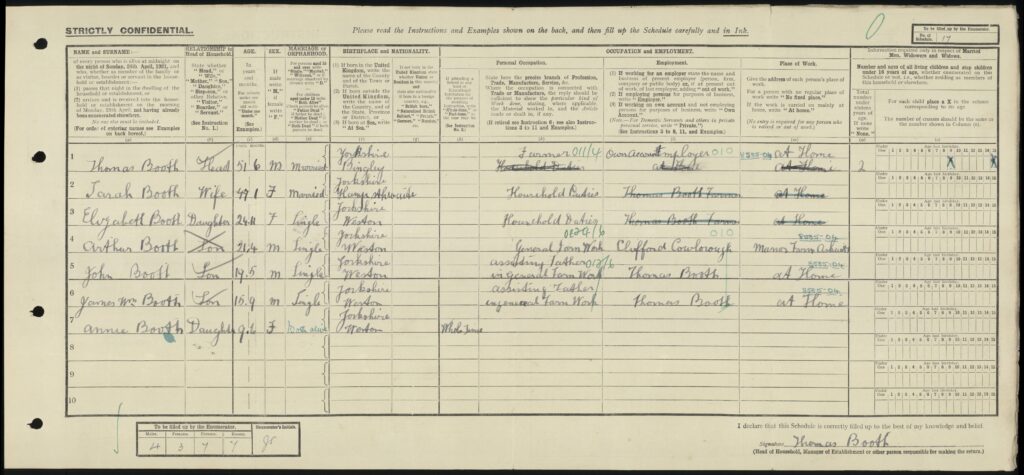
On to Nana’s father’s family, the Booths. Whilst there is very little here which I didn’t know, it was good to have further confirmation of certain details such as Sarah’s birthplace where I had previously considered different options. However, Arthur’s workplace on a nearby farm is new and something worth doing further work around. Scales Farm clearly couldn’t support the whole family. I have an intriguing photo of Arthur as a young man together with a group of men of varying ages. As much as I would love this to be of Arthur, Thomas & other relatives, it is just as likely to relate to his 1921 employer.
Mary Abigail (Clapham) & George Houseman, Mary Ann (Wilkinson) & Samuel Clapham
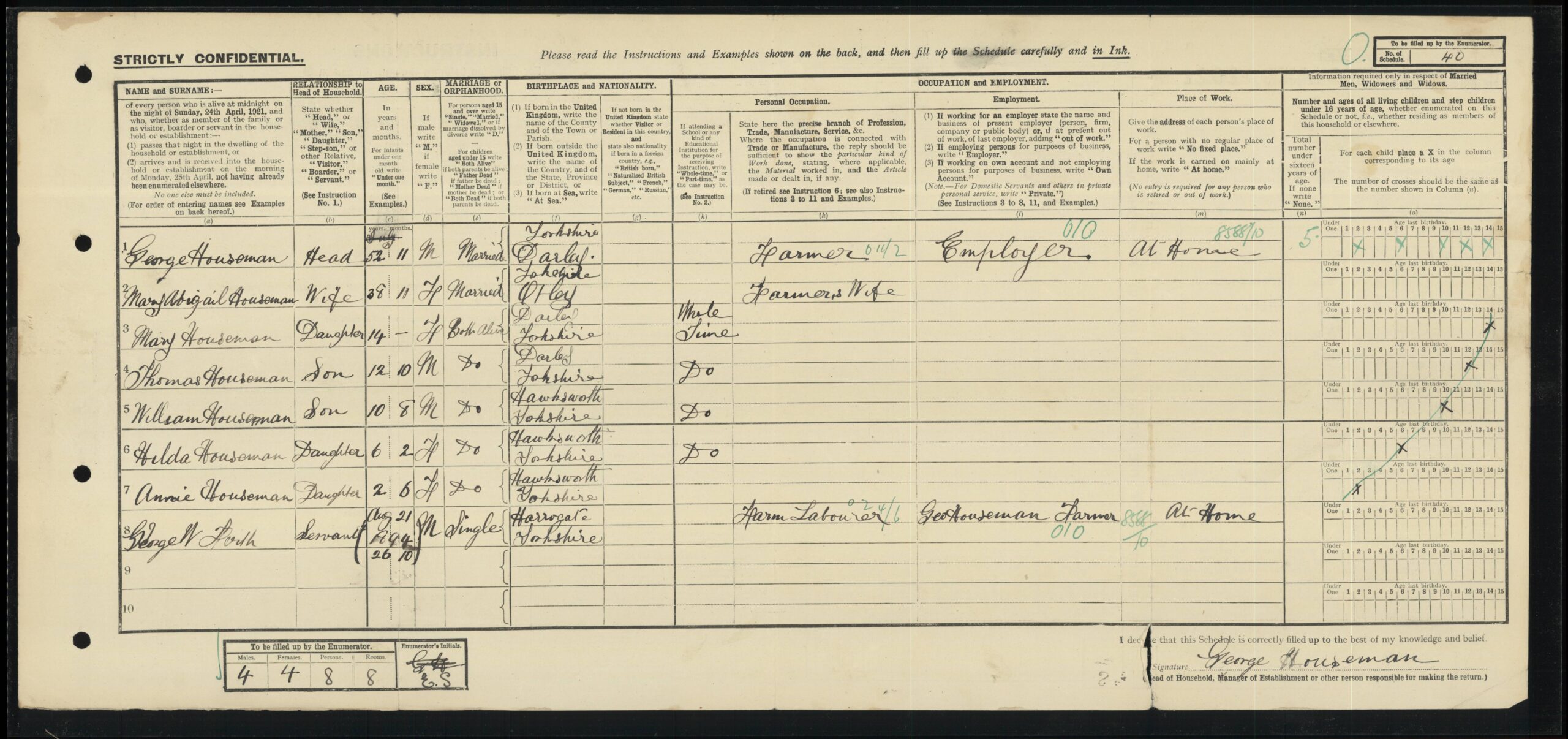
Switching sides to my Dad’s parents.
I perhaps shouldn’t have such low expectations of Grandad’s family given that it is through Grandad that I have found both a proven link to women’s suffrage through Martha Clapham (aka Maria Greevz) and a rather more spurious link to royalty but the 1921 census did nothing to help change my opinion. If only Grandad had been born five days earlier.
Mary Abigail (Clapham) & George Houseman (Grandad’s parents) are to be found at Fairfield Farm with their children. George was the oldest of my great grandparents by some fifteen years, so it is no surprise that both his parents had died more than a decade earlier. Mary Abigail was the next youngest and her parents Mary Ann (Wilkinson) and Samuel Clapham are both to be found farming at North Rigton.
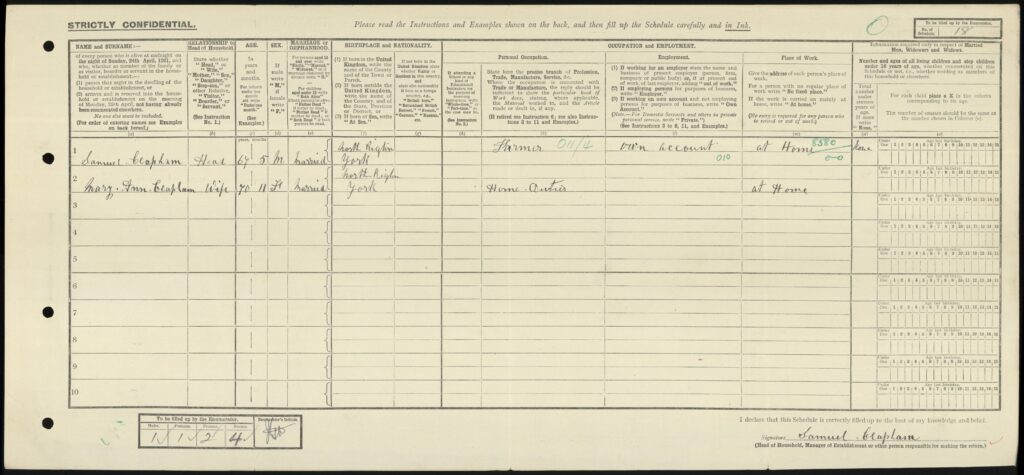
Hilda Mary (Scott) & Jesse Houseman
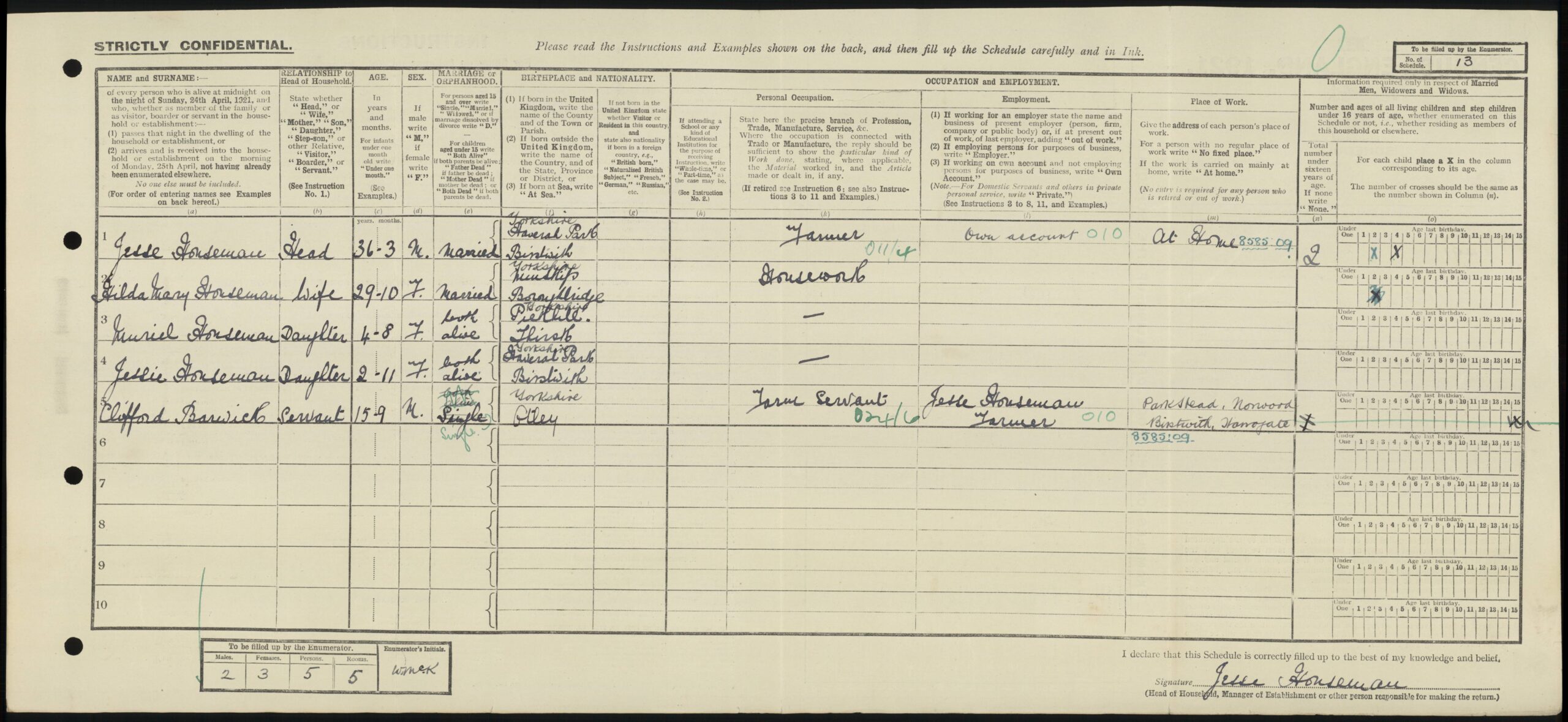
Grandma was born just over a month after the census was taken. I do rather smile at her mother, the rather smart Hilda Mary, being caught on paper at eight months pregnant – I feel certain she would never have allowed herself to be photographed at this stage. But rather more importantly are the birthplaces of Grandma’s older sisters, Muriel (born in Thirsk, home of Hilda’s parents) & Jessie (born in Birstwith) plus the actual recorded address (Park Head, Norwood). There’s potentially more movement in Hilda & Jesse’s early married years than Grandma either knew or properly recorded.
Maria (Reynard) Scott
Figure 55: 1921 census from findmypast including Maria (Reynard) Scott
Of all my great, great grandparents, Maria (Reynard) & John Scott were the only pair who came close to being upper middle class. Remember this was the generation who were born twenty years into Queen Victoria’s reign, class mattered, and Maria epitomised this age. It is from her I have inherited the classic middle-class Victorian photo album (for which I am very grateful!). Hilda, her daughter, though always smart, was also quoted, by my Grandma, to have “married down”. Here, in 1921, we see Maria in her element. She’s my only female ancestor to head a household in this census, proudly describing herself as “head” and “farmer” and her son as only “farm manager” working for “Mrs Scott.” Her husband, John, had been dead for a year and there was no sense of handing over control here.
This census also neatly links in the Housemans. Whilst I already know that Maria’s daughter, Laura, married her sister’s husband’s uncle, future generations may not and the 1921 neatly demonstrates a sister who is also an aunt.
Amelia (Bradbury) Houseman

I am pretty certain that Grandma inherited her matriarchal tendencies from both her Grandmothers but Amelia (Bradbury) Houseman’s appearance in the 1921 census completely cloaks this.
I end this tour with the most unfairly represented of all my ancestors in the 1921 census. Amelia was rightly recorded as retired and living with her daughter and son-in-law, at Lime Street in Harrogate, where she was to live for the remainder of her life. The census says nothing of the thirty years following her husband’s death during which she continued to run the family farm both alone and in partnership with one or more of her sons. It is also silent of her fight against the 1920 rent increases which ultimately forced her to retire and left her, as a woman, disenfranchised in the 1922 election, the first in which women could vote.
Are the 1921 censuses worth the money? I can only speak to someone who knew a lot about her twenty-one ancestors who were living at the time. Two (Maria (Reynard) Scott & Amelia (Bradbury) Houseman) reinforced the impression I have held, that the women in our family have always been matriarchs. Two (Hilda Mary (Scott) & Jesse Houseman and Arthur Booth) will lead me to better map the places my ancestors lived and worked). One (that of Jane (Brooks) & Henry Barrett containing Amy Barrett) leads me to an intriguing story, albeit of a cousin, and one (that of the Moodys) was pure gold – helping both confirm the lodger of family legend and explain an intriguing photo.
With much gratitude to Natalie Pithers who runs the Curious Descendants for setting twenty-one as today’s challenge.

